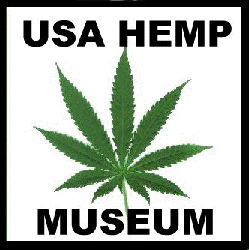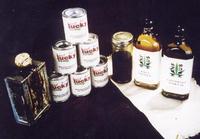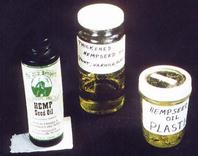|
1. WELCOME TO THE HEMP VARNISH & PAINT ROOM.
At this point in our hemp research, we know little of the early history of paint and
varnish. We would suppose that the history of varnish goes back to the advent of
shipbuilding as a sealant on wood ships, somehow copied from pitch or tar of trees, or
melted from petrified resins like liquid amber or copal. The chemists of ancient Egypt or
China no doubt refined the process of making varnish and colored paints.
|
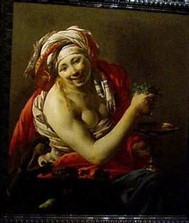 |
Artists of
many cultures have painted with oil paints made of hemp seed oil on canvas (hemp).
This oil on canvas painting is from the new Getty Museum in Los
Angeles. Titled: Bacchante with an Ape.
1627.
By Hendrick Ter Brugghen. Many of the
"old masters" painted on canvas. |
 |
The
Illustrated History of SHIPS AND BOATS,
1964, describes the galleons of the 1550's: "The superstructure
was painted in bright colors laid on in geometrical patterns that gave them a zebra-like
or checkerboard effect." The picture on the left,
from this book, shows the reconstructed Victory, ship of Lord
Nelson, in Portsmouth, England, sporting fresh paint. |
During the Congressional hearings on the
1937 Marijuana Tax Act, Ralph Loziers of the
National Oil Seed Institute, representing paint manufacturers and high quality machine
lubrication processors, showed up to disagree with the Act. He testified:
"In the past 3 years there have been 193,000,000 pounds of hemp seed
imported into this country, or an average of 64,000,000 pounds a year."
What is the oil used for, he was asked. "It is a drying oil, and its use is comparable to
that of linseed oil or a perilla oil. It has a high iodine principle or strength. It is a
rapidly drying oil to use in paints. It is also used in soap and in linoleum."(p.61.)
|
|
2. HEMP MUSEUM VARNISH
When I learned of varnish being made of hemp, I started looking in antique and junk
stores for old cans of varnish. I came across one in Willits, CA, not far from where I
lived in Mendocino County in Northern California. It was a square can with a round opening
stoppered with a cork, made by the Pittsburgh Plate Glass Co. I guessed the can to
be of 1900-1920 vintage (I still have not researched this), but when I shook the can I
could tell the varnish was still good. The can is shown below
(right) and compared to a quinine can of Civil War vintage.
|
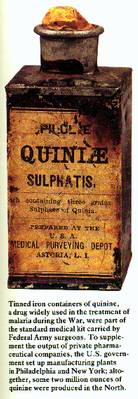
The tinned iron can of Civil War vintage is the
closest relative of the varnish can in the Hemp Museum. |
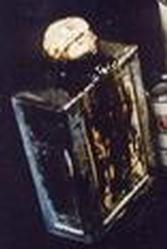
Varnish can from the Pittsburgh Plate Glass Co. |
I had purchased a set of encyclopedias from the turn of the century for the
hemp paper
I thought it
contained, and looked up varnish in it. They had a description of varnish made of boiled
seed oil and copal resin, among others. I then set about tracking down the copal resin,
which I learned was sold as a incense like liquid amber or frankincense. Copal is a
mined fossilized tree resin found in various parts of the world.
|
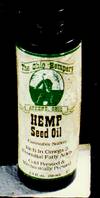 |
I boiled hemp seed oil purchased from the Ohio Hempery in 1991 (shown
left), for 45 minutes, which
left my cabin filled with smoke. The copal was melted in a small frying pan and the oil
stirred in gradually. I do not remember the quantities used, but the result was a fine
looking varnish. I later sanded some scraps of oak flooring and applied a coat of the
varnish. It seemed like it took a long time to dry (I didn't try to thin it), but dried to
a hard shiny coating. Several of the small boards, and the jar of varnish were labeled and
added to the U.S.A. Hemp Museum. Photo:
Bill Bridges |
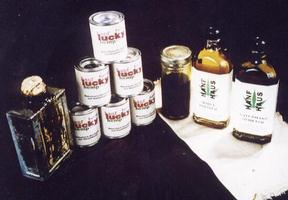 |
In the array of paint and varnish
goods shown on the left, are from left: 100 year old varnish
can, six hemp-oil-based paint cans from Germany, Jar of curator's
homemade varnish, German made hemp furniture polish and varnish.
Photo: Bill Bridges |
Donate
and/or buy the books
|
